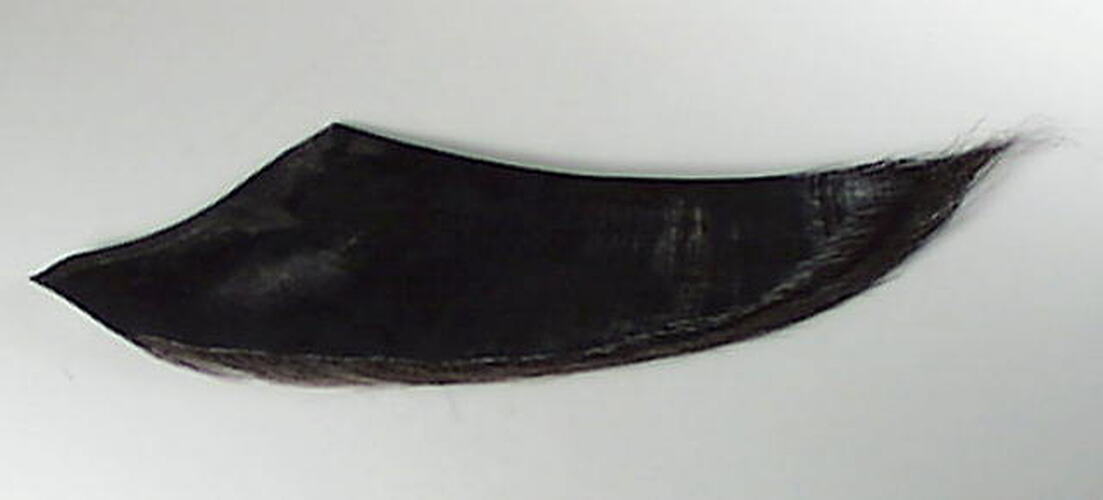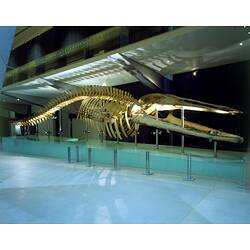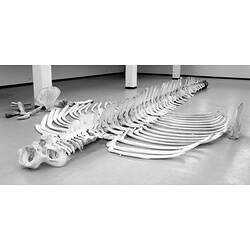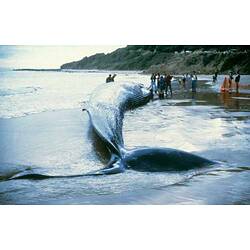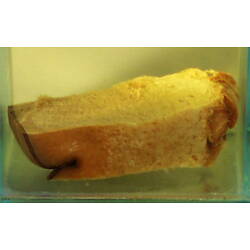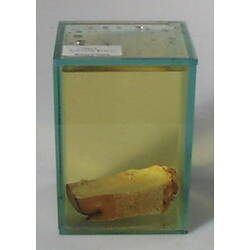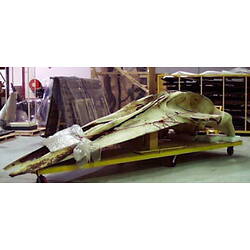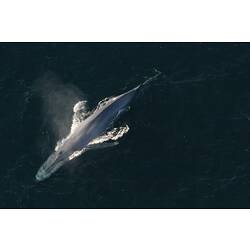Summary
Blue Whales are the largest animals ever to live, and they can occasionally be seen in Victoria's deep offshore waters. The skeleton pictured here is of a juvenile male stranded on a beach at Cathedral Rock, near Lorne, Victoria, on 5 May 1992. It weighed 40 tonnes and was 18.7 metres long; removing it from its beached position to the museum required several cranes, a bulldozer and a low loader.
The taxonomy of Blue Whales remains debatable. This specimen has been assigned to the subspecies known as the Pygmy Blue Whale, Balaenoptera musculus brevicauda. Many scientists argue that this taxon is merely a subspecies, while others insist it is a separate species. Analysis of DNA might provide further evidence one way or the other.
Meanwhile, the Blue Whale's articulated skeleton draws an appreciative crowd at Melbourne Museum. It is by far the largest animal displayed at the museum and epitomises the variety of remarkable fauna found in Victoria.
Specimen Details
-
Taxon Name
-
Author and date of publication
Linnaeus, 1758
-
Preferred Common name
Blue Whale
-
Number Of Specimens
1
-
Sex
Male
-
Specimen Nature
Nature: Baleen, Form: Dry
-
Date Visited From
6/05/1992
-
Date Visited To
6/05/1992
-
Category
-
Scientific Group
-
Discipline
-
Collecting Areas
-
Type of Item
Taxonomy
-
Kingdom
-
Phylum
-
Subphylum
-
Class
-
Order
-
Suborder
-
Family
-
Genus
-
Species Name
musculus
